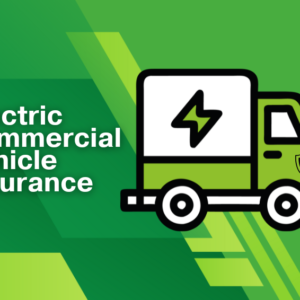Find the best ecommerce platform for your small business based on cost, feature set, performance, included services and support.
An eCommerce platform is a plan of action that makes esteem by working with trades between autonomous gatherings, which normally unites clients, and makers with platforms make networks and markets that permit clients to cooperate and execute through network impacts and the shift to digital and trend-setting innovation in trade have changed how we work together, set out the two assets, and open doors for business practitioners.
An eCommerce platform has four center capacities:
- Audience building
- Matchmaking
- Providing center devices and services
- Setting rules and guidelines
What Is An eCommerce Platform?
An e-commerce platform is an application, which helps a business and its clients to conduct sales through the Internet. It covers such capabilities as catalogue management, acquisition and selling, order fulfillment, customer relations, and even delivery. That is why perfect e-commerce platforms should be flexible, scalable, and provide as smooth experience to merchants as well as to customers.
What Does An eCommerce Platform Do?
An e-commerce platform primarily performs the following tasks:
- Website creation: E-commerce as a business activity which involves the creation and maintenance of an online store.
- Product management: Maintaining and updating of Track data of product catalogue, price list and Stocks.
- Order processing: Order processing, payment processor and handling of orders.
- Marketing tools: Starting with instant SEO, social media integration, email marketing, and analysis.
- Customer service: Use of chatbots, live chat with customers, and responding to the customer support ticket.
- Mobile responsiveness: Making shopping seamless with multiple cross-platform and multi-screen considerations.
Comparison Table: Features and Pricing
| Platform | Best For | Starting Cost | Unique Features | Scalability |
|---|---|---|---|---|
| Shopify | Small to medium businesses | $29/month | Extensive app store, global selling | High |
| Magento Commerce | Large enterprises | Custom pricing | Advanced customization, AI tools | Very High |
| 3DCart | Feature-rich free option | Free | Free for U.S., strong SEO tools | Medium |
| BigCommerce | Growing enterprises | $39/month | SEO tools, no transaction fees | Very High |
| Virto Commerce | Flexible B2B solutions | Custom pricing | API-first architecture | High |
| WooCommerce | WordPress users | Free | Open-source, extensive plugins | High |
| Salesforce Commerce Cloud | Large-scale businesses | Custom pricing | AI-driven insights, cloud-based | Very High |
| Squarespace | Creative professionals | $16/month | Stunning templates, marketing tools | Medium |
| Volusion | Small to medium businesses | $29/month | Built-in SEO, analytics dashboard | High |
| PrestaShop | Open-source flexibility | Free | Multilingual, multi-currency | Medium |
| Wix | Beginners | $27/month | Drag-and-drop builder, templates | Medium |
| Quick e-Selling | Budget-friendly solutions | Free & Paid | Mobile-first, pre-built templates | Medium |
| Yo-Kart | Multi-vendor marketplaces | $250/month | Vendor management, customization | High |
13 Best eCommerce Platforms for Small Businesses
If you are looking for the best eCommerce platform, we have listed top 10 eCommerce platform for small business owners. It will help you to find the best eCommerce platform that can easily manage your business requirements.
1. Shopify

Shopify is perhaps the most mainstream eCommerce stage on the planet and it is a web application that assists you with making an online store rapidly and effectively with many available layouts. You can customize those formats to best accommodate your online retailer needs or plan your own store’s look. Likewise, you can ensure the information of your client and store is protected as Shopify has level 1 PCI consistency and 256-cycle SSL encryption for security, and giving a full CMS, Shopify enables you to deal with the usefulness and the design of your online store.
Key features:
- Templates and themes
- Payment processing
- SEO tools
- Mobile optimization
- Abandoned cart recovery
Pros:
- Easy to use and setup
- Flexible pricing plans
- Reliable customer support
- Numerous integrations
Cons:
- Credit card transactions fees for different bearing transactions
Pricing:
- Basic Shopify: $29/month
- Shopify: $79/month
- Advanced Shopify: $299/month
2. Magento Commerce

Magento Commerce is additionally notable for being unbelievably complicated, this stage has huge advantages that make it have the right to be at the main situation on this rundown and the starting of Magento 2 has taken the stage to a more significant level, speeding up many suppliers to make more successful answers for B2B eCommerce firms.
For businesses looking for global B2B trade opportunities, platforms like eWorldTrade also complement these eCommerce solutions by connecting suppliers and buyers worldwide.
Key features:
- Free products and freely added categories
- B2B and B2C support
- SEO and marketing tools
- Payment processing
- Multichannel integration
Pros:
- Highly customizable
- Enterprise-level features
- Open source
Cons:
- Steep learning curve
- Needs the application of professional know-how
Pricing:
- Magento Commerce Cloud: $22,000/year.
3. 3DCart

The company devotes to help online shippers construct online stores that position higher and sell more with the stage gives natural highlights, mobile prepared subjects, the most recent SEO standard, and marketing eCommerce tools to make your store convert higher and increment transformation rate.
Key features:
- Unlimited products
- Responsive templates
- Marketing tools
- Order management
- Inventory management
Pros:
- Affordable pricing
- No transaction fees
- Extensive features
Cons:
- The user interface might be made more convenient
Pricing:
- Standard: $19.99/month
- Pro: $34.99/month
- Unlimited: $79.99/month
4. BigCommerce
![]()
The stage is additionally known for its low all-out cost of proprietorship and profoundly adaptable APIs and it empowers your store to coordinate out-of-the-crate with the greater part of the necessary solution in the eCommerce environment and businesses covering both B2B and B2C clients can utilize this stage as it makes it simpler to make diverse value records or inventories for various client gatherings.
Key features:
- Unrestricted product and order.
- Customizable templates
- Built-in SEO tools
- Abandoned cart recovery
- Custom API access
Pros:
- Flexible pricing
- Wide range of features
- Strong integrations
Cons:
- High monthly tariffs are involved with some of the plans.
Pricing:
- Standard: $29.95/month
- Plus: $79.95/month
- Pro: $249.95/month
- Enterprise: Contact for pricing
5. Virto Commerce

Virto Commerce is a unique open-source B2B ecommerce platform. Because Virto is a headless eCommerce platform, it is ideal for implementing your unique cross-platform digital commerce strategy. It provides flexible and modular business scenarios with free choice and a unique customer experience that retailers, wholesalers, store owners or any formal marketplace would like to provide to customers.
You can Launch a scalable enterprise e-commerce platform and get the most out of the advanced, high-load ASP.NET Core solution and Microsoft technologies. SQL Server Integration Services among various integration methods.
Key features:
- Headless architecture
- Omnichannel support
- AI-powered recommendations
- Personalization
- Marketplace management
Pros:
- Flexible architecture
- Highly scalable
- Robust APIs
Cons:
- May be used for new employees and for positions which the employee needs significant training.
Pricing:
- Demand driven given every client’s requirement and market niche.
6. WooCommerce
![]()
WooCommerce is a free WordPress module that empowers shippers to transform their WordPress destinations into online stores unreservedly and offers extra paid highlights and incorporating choices to smooth out the usefulness of the shopping basket and this open-source stage is an ideal answer for little brands with WordPress development assets as it will be not difficult to customize.
Key features:
- Responsive themes
- Integrated payment gateways
- Product variations
- Coupon codes
- Extensive plugin library
Pros:
- Easy to install and set up
- Many choices and perfect customization
- Affordable pricing
Cons:
- Needs a WordPress website
- May have compatibility problems
Pricing:
- It is free (Extensions begin at $29/year).
7. Salesforce Commerce Cloud

Salesforce is notable for its CRM solutions and the company professes to assist you with reinforcing the relationship with clients and develop the world’s first CRM available with Einstein AI and officially known as Demandware, Salesforce Commerce Cloud is a cloud-based eCommerce stage customized to both B2C and B2B traders. Consequently, it coordinates many other CRM and promoting services, which assists you with developing your business and assemble a decent client relationship all at a time.
Plus, Salesforce Commerce Cloud offers different highlights, for example, request the executives, trade personalization with AI, globalization answers for worldwide businesses, and more solutions order by business type, requirements, industry, and job. Notwithstanding having the option to handle high volumes of traffics and sales, Salesforce isn’t appropriate for little brands or starters in selling on the web as its excessive cost and complex mechanical prerequisites.
Key features:
- Omnichannel support
- Personalization
- B2B commerce
- Global commerce
- Seamless integrations
Pros:
- Accessibility, Complete features and scalability
- Wide range of integrations
- High customization
Cons:
- Complex initial procedures
- High pricing
Pricing:
- Individual cost estimates as in where applicable clients opt for customized services.
8. Squarespace
![]()
Whether you’re a beginner or an established brand, this all-in-one platform gives you everything you need to run and grow your business website. They offer many features and tools for building an eCommerce website and provide hosting in all available packages. Squarespace is famous for its award-winning designs, which makes it become the leader in website design for world-class designers. They offer various highlights and tools for building an eCommerce website and give facilitating in every available bundle. Squarespace is renowned for its honor-winning plans, which causes it to turn into the forerunner in web architecture for a-list planners. You can utilize consistent formats and natural intuitive tools to develop your sites to your own style.
Key features:
- Ecommerce templates
- Inventory management
- Secure checkout
- Abandoned cart recovery
- Sales tax calculation
Pros:
- Easy to use
- Built-in marketing tools
- Professional designs
Cons:
- Offer only a few choices about color and other features.
- The ability to have higher priced eCommerce features
Pricing:
- Basic Commerce: $27/month
- Advanced Commerce: $49/month
9. Volusion

Volusion has been in the business for just about twenty years and is an across-the-board eCommerce solution that assists you with making, oversee, and grow your online store. The stage engages clients to assemble online stores with many convenient highlights and natural usefulness with you can make your online store on your way with expertly designed subjects, a variety of route styles, custom areas, a rich substance editorial manager, and then some. It offers eye-getting product pages, an extensive request framework, an adaptable payment process, high security, and that’s just the beginning and additionally, Volusion offers includes that are urgent to increase your business, and with amazing SEO devices.
Key features:
- Responsive templates
- Product importing
- Order management
- Abandoned cart recovery
- CRM integration
Pros:
- Simple setup and use
- Powerful marketing tools
- Detailed reporting
Cons:
- Fixed settings
- Higher prices
Pricing:
- Personal: $29/month
- Business: $79/month
- Professional: $213/month
- Premium: $363/month
10. Prestashop

The stage is uninhibitedly open and downloadable and you will simply need to pay for costs identified with the facilitating, SSL certificate, and something different compared with you can construct your website with Prestashop’s expert-looking and fleek topics with it don’t restrict your inventiveness and thoughts in designing your own website. You can customize those subjects to customize your online on your own style and preference. Plus, there is a wide range of addons and modules adding to help the general exhibition of your online store. You can sell with your products, orders, client relationship, and get the report on constant statistics.
Key features:
- Responsive themes
- SEO optimization
- Product management
- Multiple payment options
- Abandoned cart recovery
Pros:
- Free and open source
- Highly extensible
- Large community support
Cons:
- Steep learning curve
- Involves technical demands
Pricing:
- Free (modules and themes start at $0)
11. Wix

It’s the best fit for spic and span online stores with reasonable valuing, 72 free subjects, and a very basic setup. The stage allows you to make a site your direction and you can choose a layout and modify anything you need to show up in your store and as your store develops, you can generally add new highlights to improve your store execution. Wix offers a mobile improved adaptation of your store, which commonly benefits both you and your clients. You can change to Mobile Editor to customize the mobile interface.
Key features:
- Ecommerce templates
- Inventory management
- Shopping cart and checkout
- Marketing and SEO tools
- Social media integration
Pros:
- Easy to use
- Professional designs
- Built-in marketing tools
Cons:
- Few alterable parameters
- Higher subscription for alternative solutions
Pricing:
- Business Basic: $23/month
- Business Unlimited: $27/month
- Business VIP: $32/month
12. Quick e-selling
Utilizing Quick e-selling eCommerce programming, you can construct, dispatch, and deal with your e-commerce store to outfit the online and sales channel with no coding experience and it is a completely overseen and facilitated e-commerce stage that accompanies an incredible CRM to oversee requests, stock, and clients from a single CRM. Additionally, Quick e-selling upholds a wide range of customization on the off chance that you need to change the look and feel of your e-commerce store.
Key features:
- Responsive templates
- Drag-and-drop editor
- Calculations of shipping and tax
- Social media integration
Pros:
- Easy to use
- Affordable pricing
- Good set of features
Cons:
- Limited scalability
- Fewer customization options
Pricing:
- Basic: $9/month
- Pro: $19/month
- Unlimited: $29/month
13. Yo-Kart
Yo-Kart is an amazing independent multi-merchant e-commerce stage and it is the best fit for entrepreneurs who are hoping to begin online commercial centers like Amazon, Etsy, or eBay. This platfrom is a completely adjustable internet business stage that permits entrepreneurs to scale the business according to the prerequisites. It offers the right set of highlights and functionalities to dispatch future-confirmation multi-seller internet business stores. Yo-Kart’s most recent delivery V9.3.0 accompanies broadened e-commerce highlights like split payments, get up at the store, Geolocation, and pre-includes APIs for charges and transportation the executives. To empower an entrepreneur to prevail in the cutthroat internet business scene, Yo-Kart gives mobile applications and reformist web applications.
Key features:
- Multi-vendor support
- Responsive templates
- The management of products or inventories
- Order management
- Payment processing
Pros:
- Most appropriate for multi-vendor marketplaces
- Many options in customizing the products
- Scalable architecture
Cons:
- Steep learning curve
- More expensive than other platforms
Pricing:
- Basic: $299/month
- Advanced: $499/month
- Premium: $999/month
Criteria for Evaluating eCommerce Platforms
We want to turn our focus to the set of criteria against which the chooses eCommerce platform can be measured and analyzed to help businesses find the platform that would suit them best.
1. Scalability
How eCommerce platforms adapt to the growth of businesses where it has implemented the necessary infrastructure and solutions for the businesses is another factor essential for positive outcomes. Scalability is important when companies experience high levels of demand, and a platform can handle those demands without causing issues with the customer. The platform should be easily scalable, so that it can be made to undergo constant improvements in functionality as it prepares for the next phase of its growth.
2. User Experience and Design
The design of the site plays a critical role in the conversion of visitors into buyers hence the need to have an easy to use and attractive eCommerce design. Such web design points as usability can define whether an online business will be successful or not. An ideal service should have clear product categories, product description, and mobile optimization to suit the clients that use different devices.
3. Customization and Flexibility
Every eCommerce platform should have features that can be tailored to meet different branding and functional needs of a business. A further refinement of the definition of customization may be made following the availability of options such as themes, layout options, color options, and linkages with payment options, CRM, and marketing systems. This includes flexibility in the form of feature add-ons where businesses can make their online platforms solution specific.
4. Security and Reliability
As for any form of business dealing with customers and products, security is always of outmost importance for eCommerce platforms. Customers themselves have to feel assured with such factors as their personal and payment information to resist cyber threats. The platform needs reliable encryption, preferably a fire wall and to be under a consistent security check. Another factor is that production must be reliable, so it doesn’t have to be shut down in case of losses and to retain its customers.
5. Payment and Shipping Options
It is important to have many types of payment methods accepted since customers are diverse and need different ways of payment accepted. You must link the plugin with the most requested payment platforms like PayPal and Stripe. Also, an eCommerce platform needs to subsume different payments like credit card payments, bank transfers, and wallets also. On the issue of shipping, the platform should be shipping friendly, that is, it should integrate with several shipping carriers, support multiple shipping methods and include tools that could aid in calculating accurate shipping rates.
6. Marketing and Search Engine Optimization Skills
Marketing/SEO capabilities are a part of a good eCommerce system which must have complete marketing platforms to assist business communicate with their consumers. Basic characteristics are email marketing, integration with social networks, and data analysis. A site that comes equipped with some nice SEO features for keyword optimization, meta tags, and even an auto-generated XML sitemap can go a long way making businesses more visible on the Web and rank better on the SERPs.
7. Customer Support and Analytics
It is always important to make sure that an organization has excellent customer care to deal with complaints and offer advice to customers. Web interfaces that support customers mainly through the usage of knowledge bases, live chat support and even round the clock support are very valuable. Additionally, software should have good analytics and reporting tools that will help evaluate a site’s performance, customer activity, sales, and other key aspects in making a decision.
8. Compatibility with Third Party Tools
Among other service and tools integrations are inventory, CRM, and reviews which make the whole process of eCommerce optimized. The platform that supports options for integration enables businesses to integrate critical tools and systems for the management of online stores.
9. Cost and Value for Money
When choosing an eCommerce platform, it is crucial to take into account the entire amount of expense, including the cost of the platforms, additional applications, and linked tools. Of course, the pricing model should be reasonable, although the platform itself should supply customers with the full spectrum of valuable features and tools.
10. Simplified Administration
Apart from the consumers, another group that needs to interact with the system is the administrators as has been described in day-to-day, easy to use administration interface. Some of those aspects would be simple layouts, home pages to scroll to for viewing and setting up several widgets, and shortcuts to some of the most essential tools to reduce total time spend as well as reduce the learning curve for the administrators and other staff.
How to Choose the Right Platform for Your Business
Let’s know step by step how to choose the right ecommerce platform for your business by defining business requirements, audience’s characteristics, competitors, and key performance indicators.
1. Know Your Business
It is necessary to define the business requirements and goals. I have realized that business goals help to make the right decisions in creating a good and viable marketing strategy. Some critical factors to consider are:
- Your Business Type: Determine which type of business you have – business to business, business to consumer or both. This will affect your platforms since every business model requires a method from the other one.
- Product Lifecycle: Various platforms relate to various stages of a product life cycle. Find out which stage of your product’s life cycle you are in and choose the platform that fits your sales process.
- Marketing Goals: Know how you want to achieve that goal of the marketing campaign. The objectives that you want to achieve should be achieved through the platform that you have selected that could be brand awareness, generating leads or customer loyalty.
2. Defining Your Clients
This is a great thing because in order to choose the proper channel for your business to develop, you have to understand your audience. Until now, what is more important is to generate content that will capture their attention and invite involvement. To effectively target your audience, consider the following factors:
- Demographics: Location, gender, income, age and education all define the platform selection significantly. For example, LinkedIn is appropriate for the business people while Instagram is trendy for youths.
- Psychographics: Understand which attitudes, interests and lifestyle your target group has. Such information will enable you to generate better suited and value-oriented content.
- Buying Behavior: While some platforms are designed for persuading the buyers. For instance, for companies that seek to make sales directly through the platform, such as the Amazon or Shopify marketplace, the marketplace model is great.
3. Analyzing the Competition
Studying your competitors will help identify platforms that they use and strategies that your target audience can be attracted with. The knowledge from this wisdom will help you make the right choice about your platform.
- Identifying Competitors: Looking at what your competitors are on, you can use BuzzSumo or Ahrefs to get an insight on this. This will help you have a rough idea of the platforms that are so far determining their effectiveness to similar businesses.
- Analyzing Competitor Strategies: It’s important to know what type of content each of the competitors is providing and what kind of relations they have with their audiences on different platforms. This will assist you to know which strategies you should emulate and which ones to avoid.
- Unique Value Proposition: Select a platform with a unique selling proposition intended for your audience. You will be better placed than your competitors and you will be in a position to create your niche in the market.
4. Evaluating Success Metrics
When you are already inclined with certain platform(s) for your business, it is time to measure the success of these platforms plus some key indicators. So that you can measure the success of your chosen platform(s) and improve upon them in future efforts.
- Audience Engagement: Measuring the interactivity of its content with the audience of the selected platform is also essential. This includes likes, comments, shares and number of followers, among others.
- Conversion Rates: Evaluate the efficiency of the selected platform(s) in terms of driving customers from the leads. Keep track of the conversion rates and understand the pertinent factors that influence the performance of such a process.
- Return on Investment: Finally evaluate the output time and effort and expenses required in things used during this process. Calculate the ROI of the marketing on each platform and then distribute your resources accordingly.
Conclusion
Choosing the right eCommerce platform for your business in 2025 will be a function of business requirements, cost sensitivity, and technical capability. In addition, there are shades of platform advantages and disadvantages or suitability for each purpose as it relates to the goals and objectives of a firm.
However, regardless of whether you are interested in an all-in-one solutions that are easy to use and full featured such as Shopify, Squarespace or Wix, or in the more flexible and complex open-source platforms like WooCommerce, Magento Commerce or PrestaShop, there is a perfect e-Commerce platform for your business out there. Despite all the good choices presented here, the prospects of the eCommerce business have never looked so bright.
FAQs
What is the easiest eCommerce platform to use in 2025?
Shopify and Squarespace are the most user-friendly, requiring no technical skills.
Which platform is best for small businesses?
Shopify, WooCommerce and Squarespace are excellent for small businesses.
How do eCommerce platforms handle international sales?
Platforms like Shopify and BigCommerce provide multi-currency and multilingual support.
Are there free eCommerce platform options available?
WooCommerce is free, but you need to cover hosting and additional plugins.
How can I migrate from one platform to another?
Many platforms offer migration tools or services to simplify the process.






